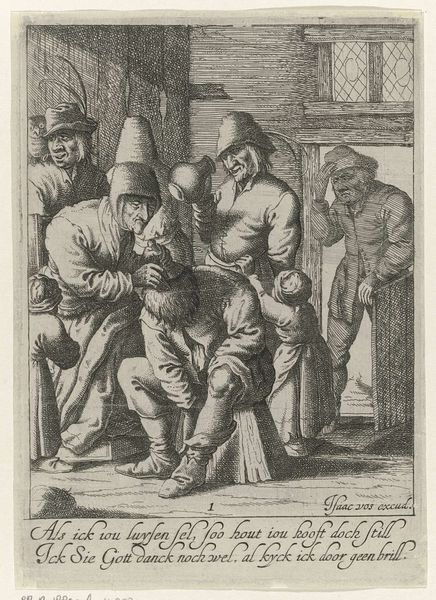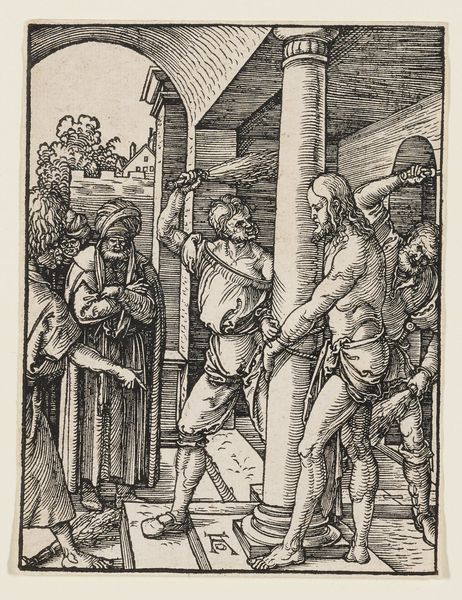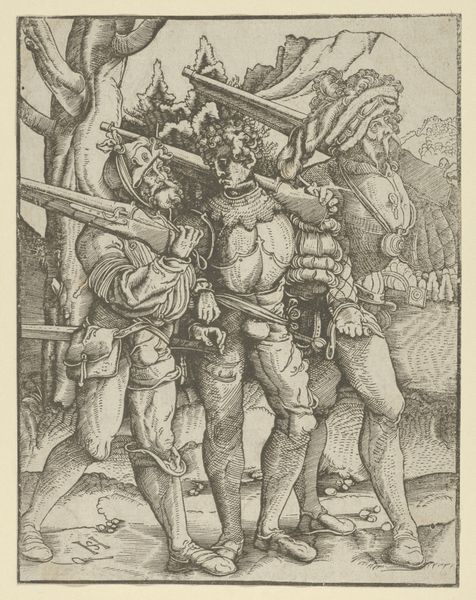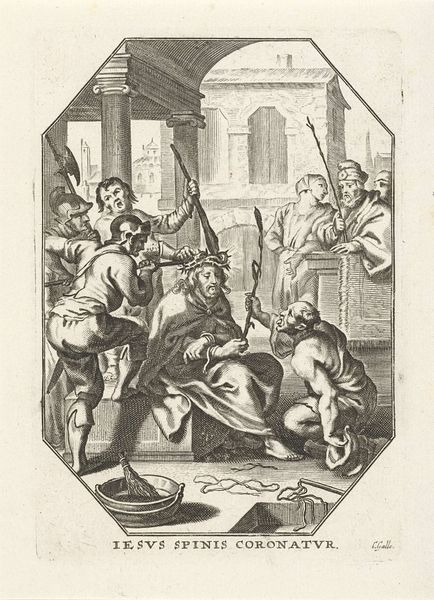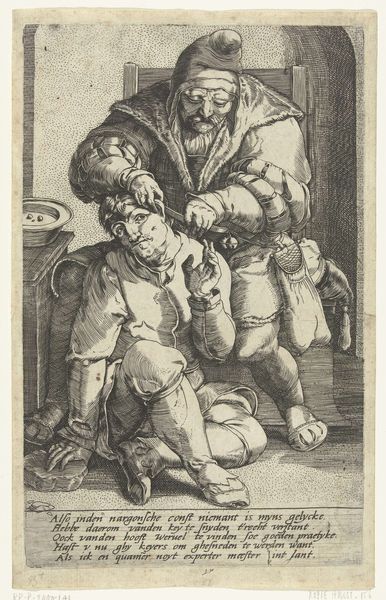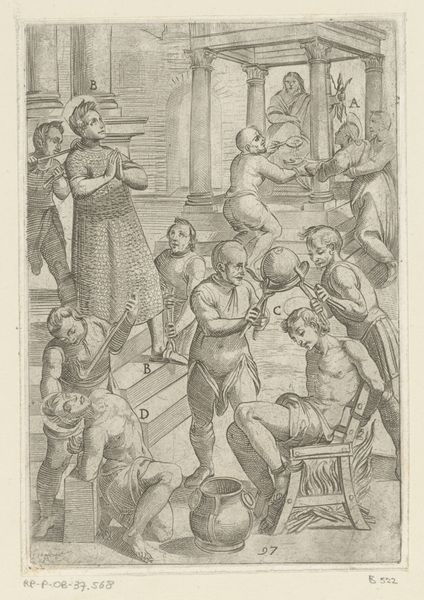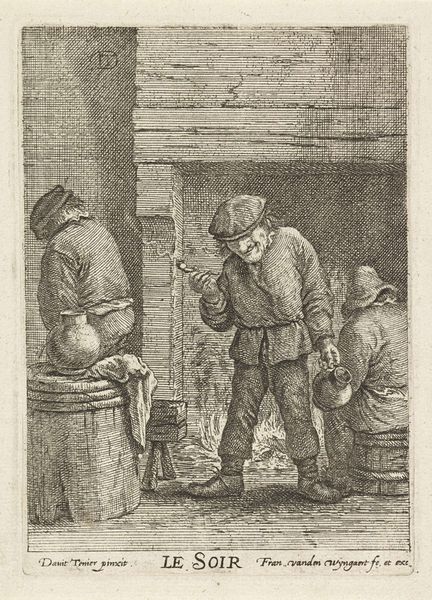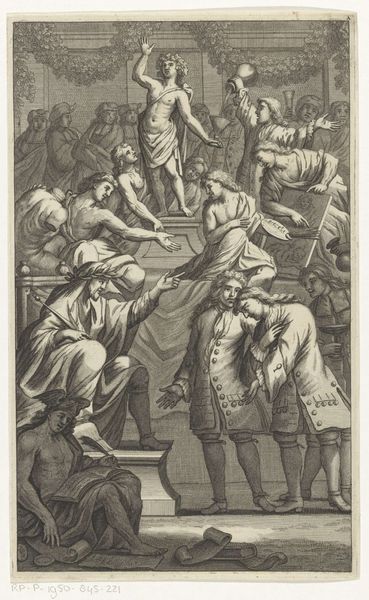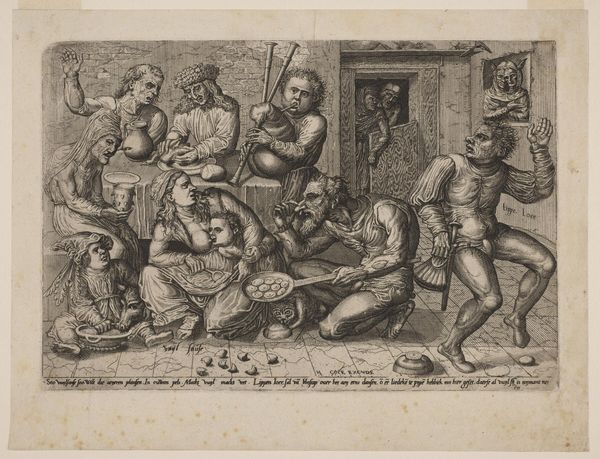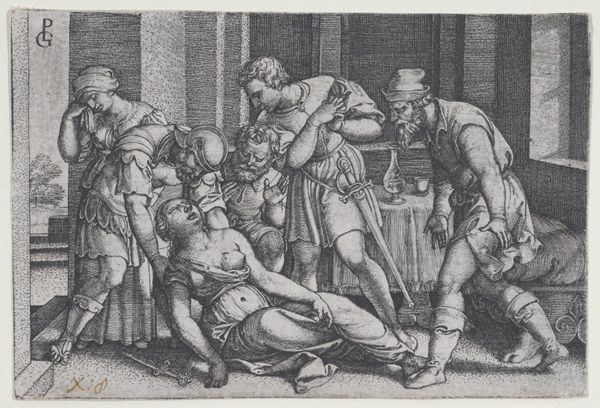
print, etching
#
narrative-art
#
baroque
# print
#
etching
#
figuration
#
genre-painting
Dimensions: height 208 mm, width 148 mm
Copyright: Rijks Museum: Open Domain
Editor: This etching, "Gevoel," dating from between 1689 and 1720, is an anonymous piece held at the Rijksmuseum. It depicts a rather gruesome scene of what appears to be a tooth extraction. I'm immediately struck by the crude, almost comical depiction of the suffering man and the gathered crowd. What stands out to you about this work? Curator: Well, the material realities of this piece immediately draw my attention. The print, an etching, speaks to accessibility. Prints allowed images and narratives to circulate amongst a broader public than painted works would. Consider the labor involved in the production of the copper plate itself, the skills necessary to execute such detail, and then the mechanics of its reproduction. Editor: That's a side of art I had not thought about much before, especially that art-making involved so much more effort to circulate! How does this production method inform the artwork? Curator: The act of creating multiple impressions inherently democratizes the image. This work, with its focus on a rather ordinary scene - a dental procedure - wasn't necessarily intended for a wealthy elite. It provides insight into everyday life and perhaps satirizes the medical practices of the time. Look at the "doctor's" tools, likely made of metal and wood: they stand in sharp contrast to any notion of sterile or specialized implements we associate with medical professions today. And consider the audience this print would have been made for and distributed amongst. What details of daily life, or social realities, did the intended consumer inhabit? Editor: So, it’s not just about the image itself, but the physical means by which that image reached people and how their place in society played into its reception. That completely changes how I see the work! Curator: Precisely! By examining the process, the materials, and the social context, we uncover so much more than just aesthetic appreciation.
Comments
No comments
Be the first to comment and join the conversation on the ultimate creative platform.
